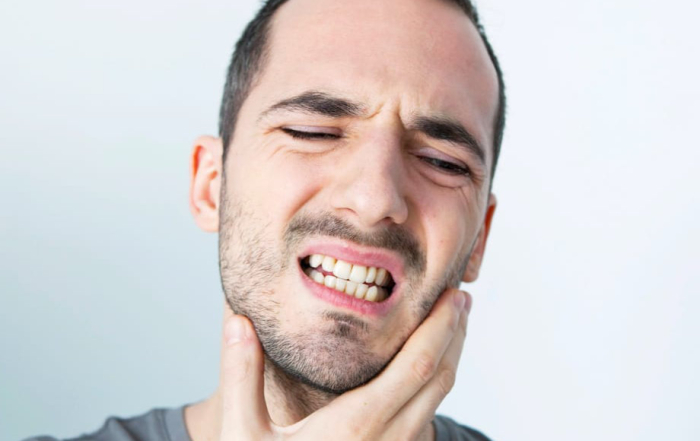Incorrect bite – what dental problems can it cause?

Have you ever thought about how much an incorrect bite can affect your dental health? Dental occlusion, as it’s medically called, may be the reason why you suffer from tooth fractures, cavities, difficulty chewing, swallowing, and even pronouncing words.
How to identify an incorrect bite
We refer to dental occlusion as the way the lower teeth make contact with the upper teeth. Even if just one tooth is misaligned, the occlusion can be unbalanced. Many patients tend to treat this issue lightly, but in reality, dentists warn about the conditions that arise from an incorrect bite. Here’s how we identify an incorrect bite:
- Disproportion between the size of the jaw and the teeth This is one of the most common cases when the jaw is too small, and the teeth are crowded because there wasn’t enough space for them to grow. On the other hand, if there is too much space in the jaw or lower jaw, teeth may erupt with gaps between them.
- Loss of one or more teeth When one or more teeth are missing, the surrounding teeth shift, changing the alignment and, consequently, the bite.
- The position of the lower jaw in relation to the upper jaw There are three common positions that the lower jaw and upper jaw can take in relation to each other. Here’s how you can identify if you have an incorrect bite:
- Deep Bite: You can identify this when the upper teeth cover the lower teeth.
- Reverse Bite: This is the reverse of a deep bite, when the lower teeth cover the upper teeth.
- Open Bite: You can identify an open bite when, even though the mouth is closed, the upper teeth do not touch the lower teeth, and contact only happens at the molars.

What happens if you don’t treat an incorrect bite?
An incorrect bite can lead to a range of other dental issues, and not only dental problems. Here are the risks you face if you don’t correct this dental defect:
- In the case of a deep bite, you’re more prone to cavities and trauma due to the exposure of your teeth outside the oral cavity.
- In more severe cases, chewing disorders may occur. In children, these disorders can be accompanied by delays in general growth and development.
- Breathing issues
- Periodontitis and obstructive sleep apnea syndrome
How do we treat incorrect bites?
The orthodontist is the only one who can tell you for sure whether your bite is correct or not. Dental braces are the medical solution to correct dental malocclusion. After the dentist examines your case and determines its severity, you can choose with them the type of braces that suits you. Schedule a consultation now with one of the orthodontic specialists at DENTESSE clinics!
Related Posts
Latest articles:
All-on-4 vs All-on-6 Implants: Which Full Smile Solution Is Right for You?
admin2025-11-12T15:22:53+02:00
If you’ve been living with missing or severely damaged teeth, you’ve probably heard about All-on-4 and All-on-6 implants, two of the most effective ways to restore a full, permanent smile. But what’s[...]
Incorrect bite – what dental problems can it cause?

Have you ever thought about how much an incorrect bite can affect your dental health? Dental occlusion, as it’s medically called, may be the reason why you suffer from tooth fractures, cavities, difficulty chewing, swallowing, and even pronouncing words.
How to identify an incorrect bite
We refer to dental occlusion as the way the lower teeth make contact with the upper teeth. Even if just one tooth is misaligned, the occlusion can be unbalanced. Many patients tend to treat this issue lightly, but in reality, dentists warn about the conditions that arise from an incorrect bite. Here’s how we identify an incorrect bite:
- Disproportion between the size of the jaw and the teeth This is one of the most common cases when the jaw is too small, and the teeth are crowded because there wasn’t enough space for them to grow. On the other hand, if there is too much space in the jaw or lower jaw, teeth may erupt with gaps between them.
- Loss of one or more teeth When one or more teeth are missing, the surrounding teeth shift, changing the alignment and, consequently, the bite.
- The position of the lower jaw in relation to the upper jaw There are three common positions that the lower jaw and upper jaw can take in relation to each other. Here’s how you can identify if you have an incorrect bite:
- Deep Bite: You can identify this when the upper teeth cover the lower teeth.
- Reverse Bite: This is the reverse of a deep bite, when the lower teeth cover the upper teeth.
- Open Bite: You can identify an open bite when, even though the mouth is closed, the upper teeth do not touch the lower teeth, and contact only happens at the molars.

What happens if you don’t treat an incorrect bite?
An incorrect bite can lead to a range of other dental issues, and not only dental problems. Here are the risks you face if you don’t correct this dental defect:
- In the case of a deep bite, you’re more prone to cavities and trauma due to the exposure of your teeth outside the oral cavity.
- In more severe cases, chewing disorders may occur. In children, these disorders can be accompanied by delays in general growth and development.
- Breathing issues
- Periodontitis and obstructive sleep apnea syndrome
How do we treat incorrect bites?
The orthodontist is the only one who can tell you for sure whether your bite is correct or not. Dental braces are the medical solution to correct dental malocclusion. After the dentist examines your case and determines its severity, you can choose with them the type of braces that suits you. Schedule a consultation now with one of the orthodontic specialists at DENTESSE clinics!
Related Posts
Ultimele articole:
All-on-4 vs All-on-6 Implants: Which Full Smile Solution Is Right for You?
admin2025-11-12T15:22:53+02:00
If you’ve been living with missing or severely damaged teeth, you’ve probably heard about All-on-4 and All-on-6 implants, two of the most effective ways to restore a full, permanent smile. But what’s[...]
Bruxism: how to stop teeth grinding and protect your smile
admin2025-08-21T15:38:22+03:00
Have you ever felt constant tension in your jaw or noticed increased tooth sensitivity? These could be signs of bruxism—a common but often overlooked condition involving involuntary teeth grinding or clenching. What[...]
3 Reasons why it’s not too late to get braces
admin2025-01-16T13:47:05+02:00
Some adults believe they have missed the right age for braces, viewing this treatment as suitable only for children and teenagers. If you are among this group, know that orthodontic treatment can[...]




















